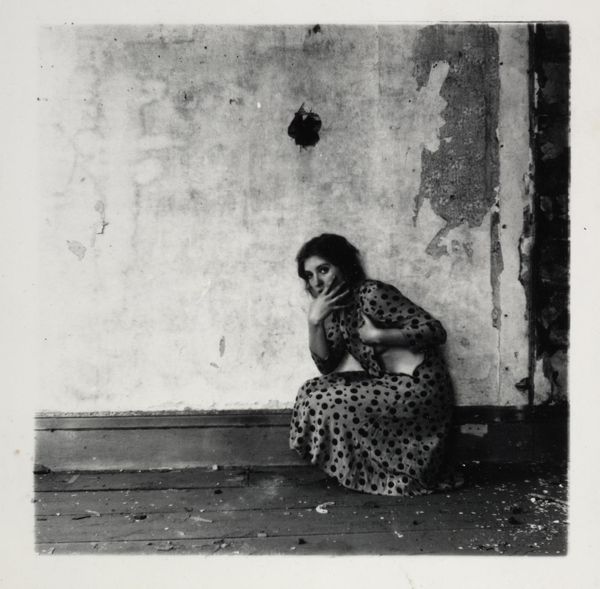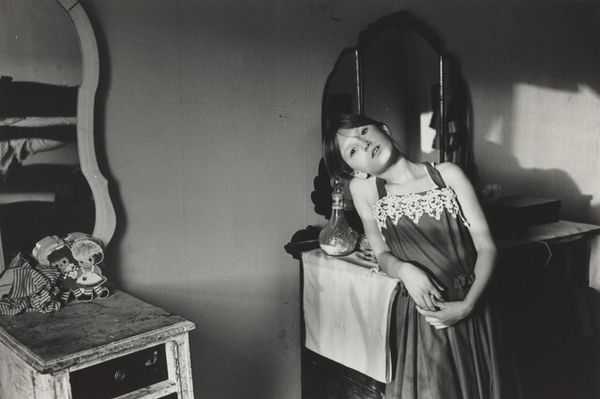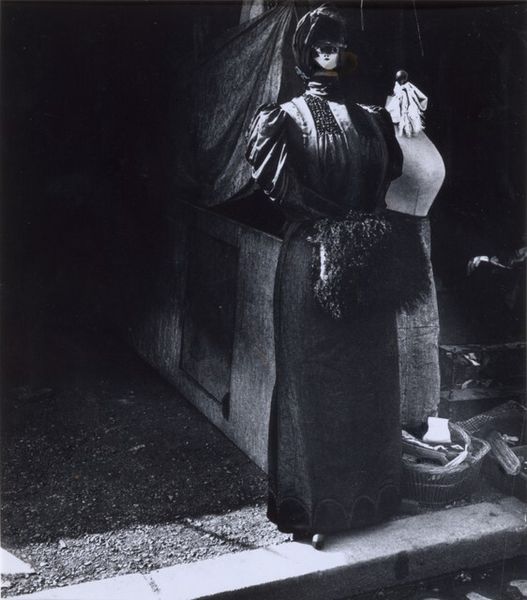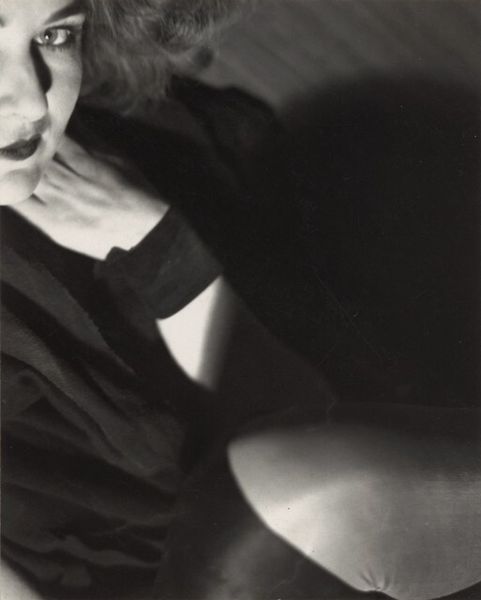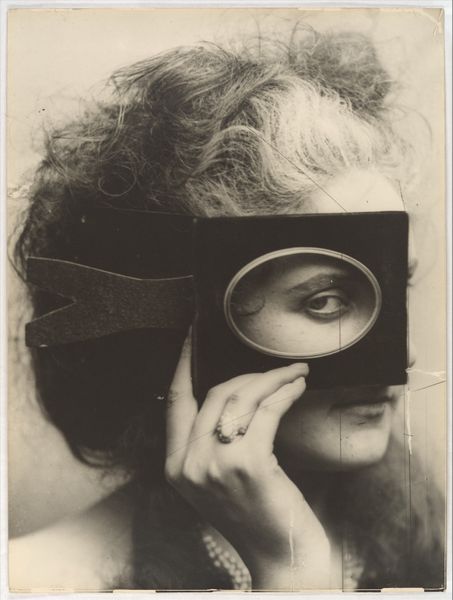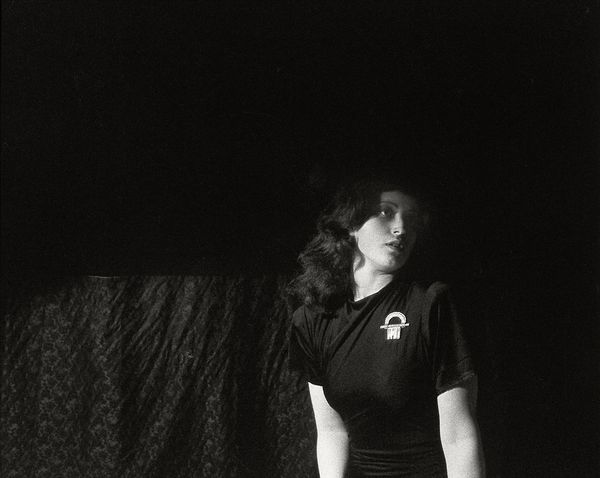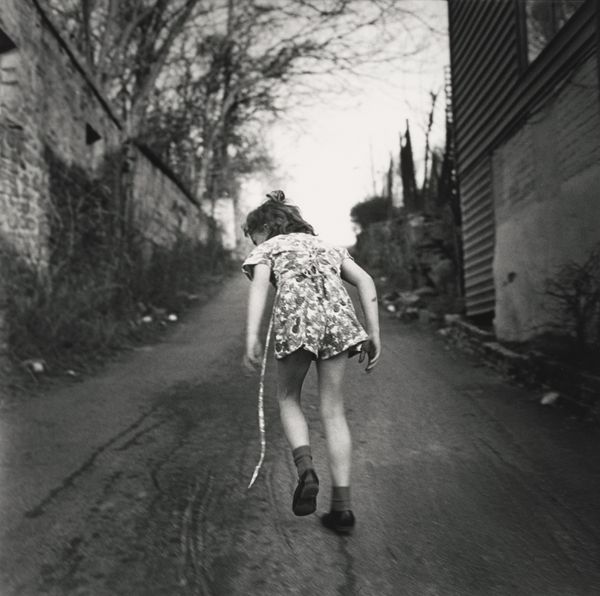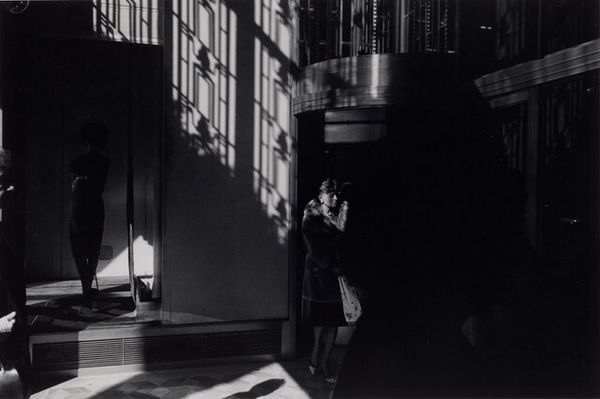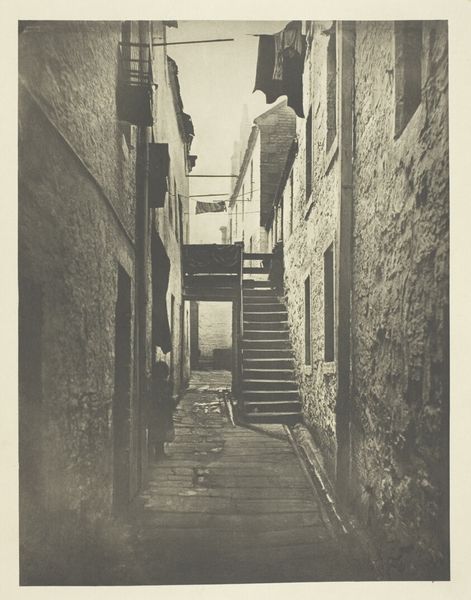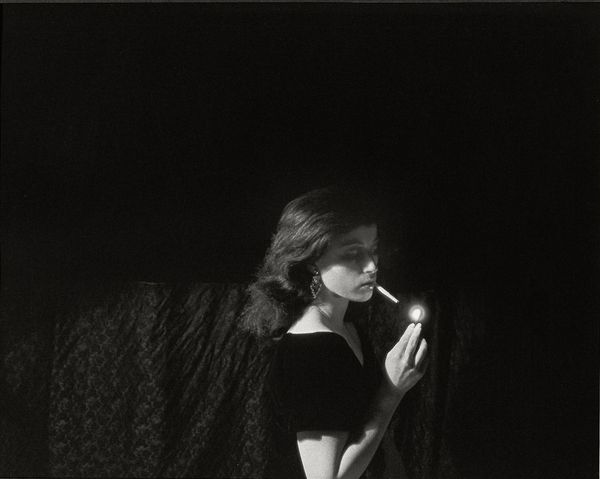
photography
#
portrait
#
african-art
#
pictorialism
#
street-photography
#
photography
#
derelict
#
cityscape
#
genre-painting
#
realism
#
ruin
Copyright: Public domain
Curator: The mood is immediately haunting. So stark. Is that… indifference on her face? Editor: That's the power of Atget. This haunting gelatin silver print, titled “La Villette. Rue Asselin, Prostitute Waiting in Front of Her Door," freezes a moment rarely documented. He exposes societal structures, gender dynamics, and economics so matter-of-factly. Curator: Waiting is the key here. Notice how the light catches the cobbled street, but the doorway she stands by is shadowed, almost a gaping maw. It’s a powerful symbol, a portal to an unknown, precarious fate, like thresholds into dark underworlds in mythology. Her costume and cross accent that iconographic importance, juxtaposed with this mundane, grim locale. Editor: Precisely. And let's unpack "precarious fate.” This is not about voyeurism or romanticism. Atget offers a pre-war portrait of women navigating the margins of Parisian society. Consider how urban renewal, rapid industrialization, class disparities, and the burgeoning sex trade impacted women specifically. What choices were available to them? Curator: Those shadows surrounding the open door speak volumes. Even the texture of the stonework is expressive, the ruin-like walls alluding to a psychological burden carried through generations. What price does this "progress" ask, culturally, personally? Editor: This is not merely a "realistic" street photograph. Atget provides the ingredients to ask harder questions about agency, survival, and systemic oppression. Note how the architectural elements box her in; she's a figure almost consumed by the built environment that exploits her. It's both social commentary and poignant portraiture. Curator: It feels less exploitative than sympathetic, although a bit paternalistic. She embodies resilience even in this state of apparent helplessness. Her cross stands as a tiny icon of hope against insurmountable odds. What is read today as oppression may have then also presented an open future and possibility, hard to measure. Editor: Atget certainly presents layers. We confront his picture with modern frameworks, seeking clarity regarding sexuality, labour and gender expression in public life. Hopefully the dialogue sparked opens our perception not just about this historic figure in time, but about continuing battles for human rights across society. Curator: A vital point; through one stark image, we access potent cultural memories, shifting meanings across decades, always in conversation. The simple, effective symbols serve as portals into that history. Editor: Yes, may such relics forever disrupt conventional readings about people and their world.
Comments
No comments
Be the first to comment and join the conversation on the ultimate creative platform.
